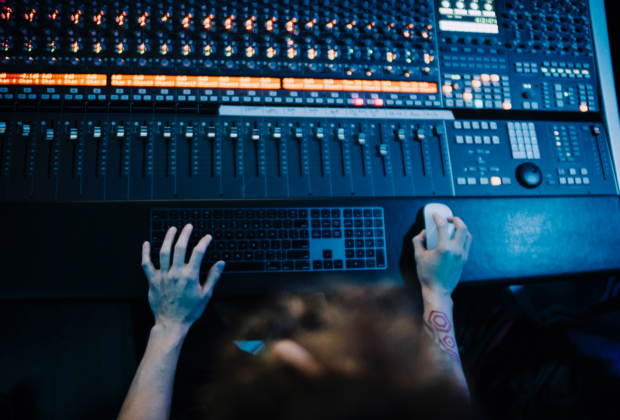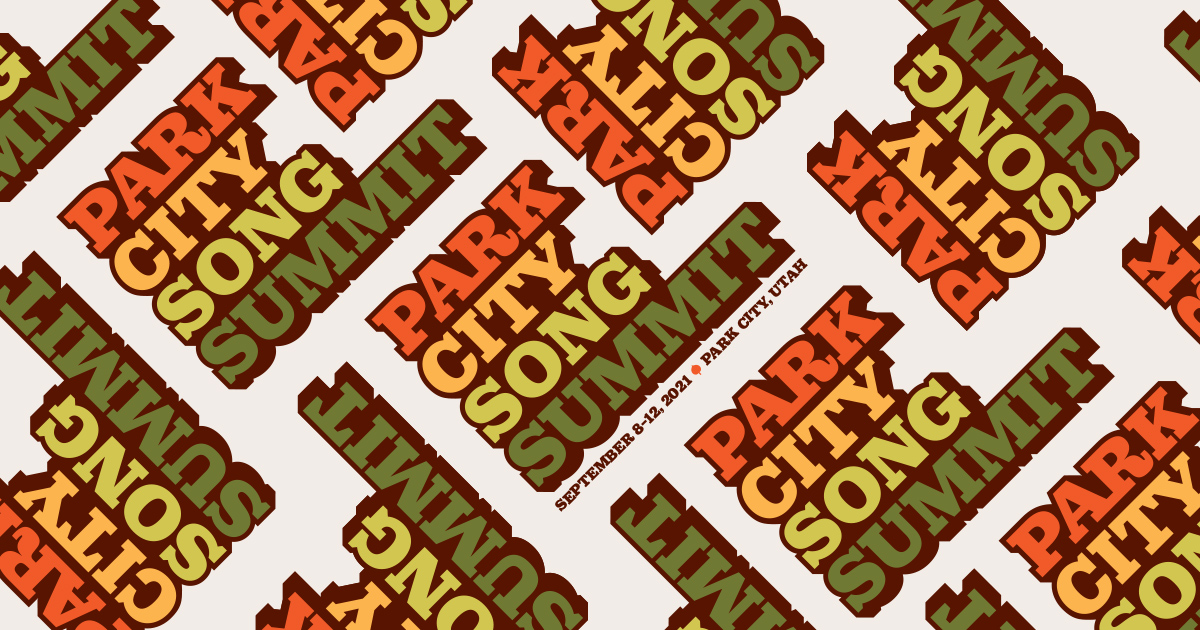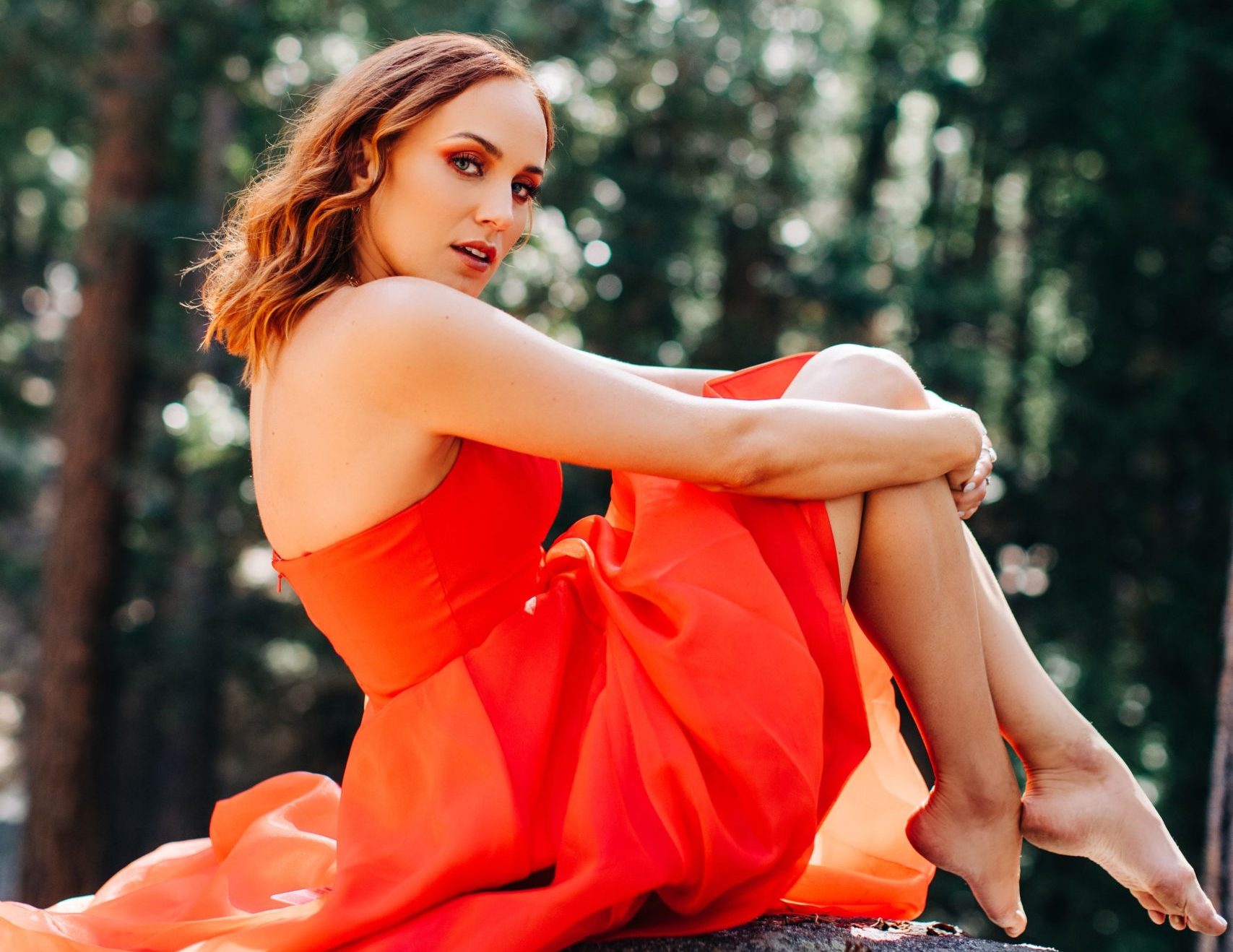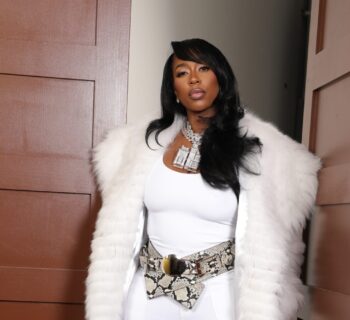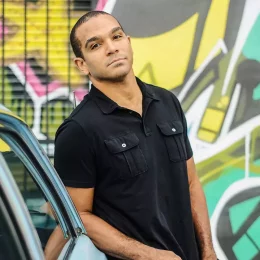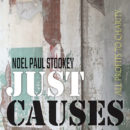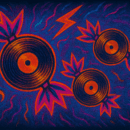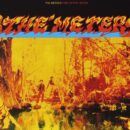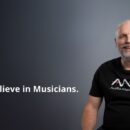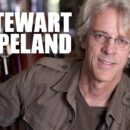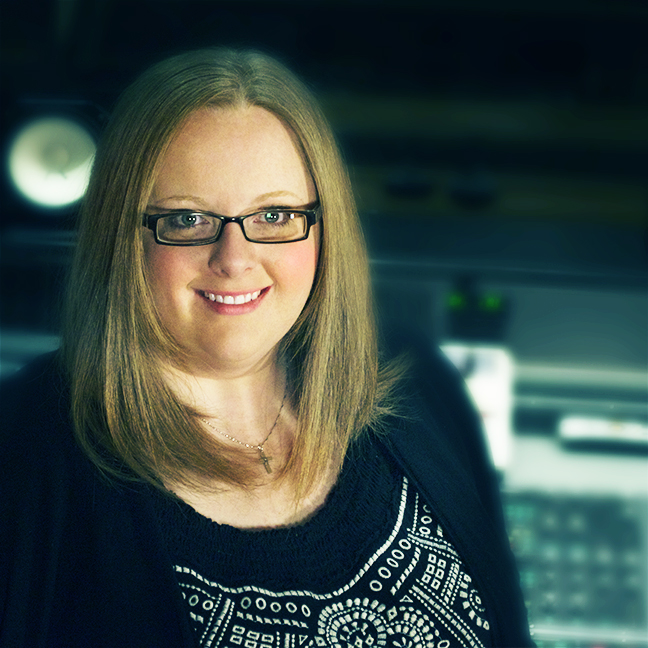 Sarah Hamilton
Sarah Hamilton
Studio: Chicago Recording Company
Clientele: The Smashing Pumpkins, Rihanna, Chance the Rapper
Web: chicagorecording.com
Sarah Hamilton began her career in studio management as a recording engineer. She spent her first six post-graduate years at various Nashville studios including East Iris and Paragon. When the opportunity to work at Chicago Recording Company (CRC) arose, she grabbed it. Hamilton interned for a few months, transitioned quickly into management and has been there since 2008. Established in 1975, CRC produced a number of commercial jingles early on, but now has three Chicago locations with a total of 11 rooms. Much of The Smashing Pumpkins’ diamond-certified Mellon Collie and the Infinite Sadness was recorded there.
What sets CRC apart from other studios?
It’s our longstanding reputation and our facilities. There aren’t many places anymore that have five full music rooms. We have a vast collection of old gear––great AKG C12s and Neumann mics––as well as all of the latest plug-ins and software. We’re malleable to clients’ budgets and different types of projects. If people want to come in and do a mostly analog session or all-digital, we can accommodate that.
What are some of the biggest challenges that face studios today?
The struggle is always getting in new clients. We have a great client base, but we’re always looking for new ones. We have such a high standard that our rates can be on the higher side. With so many people working out of their homes, they expect lower rates. We make sure they understand how much more we can offer.
For our music side, most of our business comes to us by word-of-mouth and our reputation. With all of the music festivals in Chicago, Spring through early Fall is our busy season. Because of those experiences with us, artists often come back to do full albums. Chris Shepard had been our general manager for decades and also runs American Mobile Studio, a service that records festivals around the country. That’s a nice connection for us.
What’s an ideal client for you?
It’s always best for us to have at least a two-week notice. Typically, we book-up about 48 hours in advance, but currently I have bookings all the way till November. We have a lot of clients who book large projects far in advance, especially during the Summer or Fall. Our ideal clients love to work. There are always the people who want to come in and hang around with their friends in a studio and maybe get some work done.
What’s one of your favorite studio anecdotes?
Not long after I started here, Sting’s management called. He wanted to record some video interviews while he was traveling. It turned into this thing where he brought in Christian McBride and they booked-out the studio just to jam.
What kinds of things did you do to survive the pandemic? Still allowed clients to come in?
We shut down for a few months toward the beginning. But immediately we set up all of our post engineers with home studios so we never truly halted work completely. We’ve put a max capacity on the number of people allowed to attend sessions. We have three live rooms [at the primary location] with a control room in the center. They open up to each other, but we’re also able to close them off so we can further isolate people. We’ve been able to record some great bands and some classical stuff because of that extra isolation.
Do you enable remote work in any way?
It’s less common on the music side versus post-production. For post, we still have engineers working from their homes. We do most of our sessions via Zoom, Audiomovers and Source-Connect.
Has the pandemic caused the industry to change permanently or do you foresee a full return to the studio, ultimately?
For music, I foresee a full return. It’ll take a while but we’ve always been an industry that a good part of the work has been done out of people’s homes. We’ve been battling that since the push towards digital decades ago. We’ll bounce back. [As of mid-May] we’re back to about 70 percent of our pre-COVID levels. People still appreciate being able to go into a professional working environment versus working out of a house.
What are the best ways for artists to save money in the studio?
Be prepared. Put in the time to rehearse and make sure that your songs are written completely. Walk into the studio knowing your game plan. It’s important to be aware of your budget from the beginning. Our bigger rooms are more expensive, but our smaller ones have the same Pro Tools systems. If your budget doesn’t allow for full mixing time in the large rooms, we can switch you to one of our smaller cheaper ones.
What’s the biggest challenge you’ve ever faced as a studio manager?
You work with a lot of clients. Some of them are serious, some are less serious, so we can have sessions that go awry. Sometimes they aren’t following protocol, being disrespectful of the studio or bringing too many other unnecessary people. Those are the times when we have to shut it down. It doesn’t happen often, thankfully. Maybe once every two years. Any issue we’ve ever had has never been connected to the artists themselves. It’s always the friends.
What does the future hold for studios?
We’ll continue. We have a lot of gear that many people can’t afford to have in their homes so the need for big studios won’t go away anytime soon. People can hear the difference between a record made in a professional studio and one that was made at home. There’s also a lot to be said for the support system: being surrounded by people who’ve done this countless times before with great results.
Final thoughts?
We’re all going to make it through. Things will go back to normal. They’re already starting to. I look forward to all of the cool projects that were written during the quarantine. •
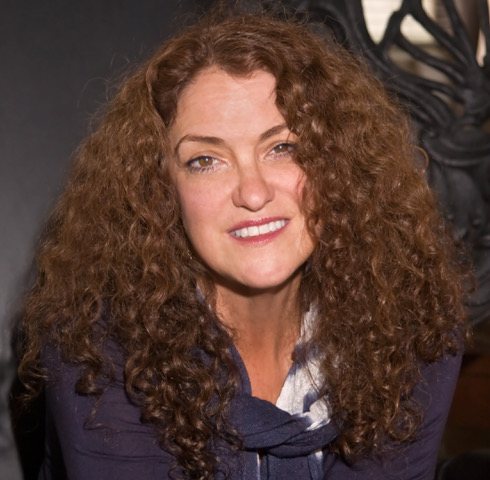 Candace Stewart
Candace Stewart
Studio: EastWest Studios
Clientele: Rihanna, Elvis Presley, Lady Gaga
Web: eastweststudio.com
South Carolinian Candace Stewart segued into studio management through her three older brothers who were all engineers at Los Angeles’ famed Record Plant. She moved to L.A. when one brother launched Take One where she began to learn about studio etiquette and setting up sessions. But Stewart soon realized that her interests lay in helping in other ways, such as marketing. She’s worked at various L.A. studios and at EastWest through its various incarnations––it was Cello for a time and became EastWest in 2006 when relaunched by Doug Rogers. It was originally part of famed engineer Bill Putnam’s United Western Recorders.
What sets EastWest apart from other studios?
The history, the acoustics and the staff. When I was at Cello, we had five techs. Now I have just one chief engineer: Lawrence Malchose. A lot of our gear was designed right in this building by Bill Putnam.
What are some of the biggest challenges that face studios today?
Rates haven’t gone up in probably 25 years and equipment has gotten more expensive, as has real estate. So one of the challenges is to keep it profitable. This isn’t a high-margin business. If you’re lucky, maybe you’ll hit 10 or 15 percent profit, which is pretty low. But the sound library company [Eastwest Sounds] is very successful––we’re two separate companies––and we’re a tool for them.
People think they can record in their homes. While artist empowerment is grand, you can’t do the same thing in your home as you can in a place like EastWest. I don’t like it when professional studios close, because I take it as a bad indicator of our industry.
What’s an ideal client for you?
It’s great if a client knows what they’re doing, what they want and doesn’t grind me too much on the rate. But it’s our job to lead people, too. It’s also important that they’re respectful to the staff. People are excited to be here and they’re usually happy because this is where they want to be.
What’s one of your favorite studio anecdotes?
Paul McCartney once sang “Happy Birthday” to me, thanks to Dave Grohl, who’s one of our favorite clients. I loved having Chris Cornell, Scott Weiland and Cheap Trick here. When you do something long enough, your personal and professional lives intertwine. All my friends are engineers and I’m a champion of the craft.
What kinds of things did you do to survive the pandemic?
At first I told my staff that they’d have to go on unemployment. But Doug [Rogers] called and said that wouldn’t happen. He kept them all employed. We were completely shut down from mid-March to mid-May. But thanks to our clients, we re-opened on May 20th of last year. Financially, it’s been devastating so it’s been important to make people be safe.
In L.A., we’re all competitors, but we’re all friends. We had Zoom meetings early on with all kinds of people. I took the county and CDC guidelines and came up with a plan and we’re still using many of those protocols. The main thing we did was look at the size of our spaces and reduce the allowable per-person room limits drastically. Studio One can hold 70 pieces and we reduced it to 20.
Do you enable remote work in any way?
We’ve used Source-Connect for years but 99 percent of what we do is real-time, in-person recording.
Has the pandemic caused the industry to change permanently or do you foresee a full return to the studio, ultimately?
I’ve already seen a return to the studio. Music is going to get heard and creators will create. People have used the time wisely to write a lot of music, so there’s plenty that needs to be recorded.
What are the best ways for artists to save money in the studio?
Be well-rehearsed; be prepared. We’re like a hotel with technology. If you need more time, that’s good for me, but I don’t like to see anyone be inefficient or get upset. A day is 12 hours. Portion it accordingly. And have a producer. A lot of artists make the mistake of self-producing. That’s an error because you’re too close to it. You need an outside, objective voice to rein you in. An engineer can help with that, too.
What’s the biggest challenge you’ve ever faced as a studio manager?
When Cello closed. But I also remember when a movie was being filmed outside of here on Easter Sunday. They ran into a fire hydrant and it exploded. Thousands of gallons of water came into the building. You can still see some of the stains on the wall and a lot of stuff got damaged. Fortunately, Sony Pictures had good insurance.
I think we’d all agree that none of us knew what a challenge was until the pandemic hit. One of the most important things to come out of this is the realization of how important it is to be healthy, take care of your family and to do what you love.
What does the future hold for studios?
There will always be a place for facilities like EastWest. They’ll remain relevant because the acoustic space enhances the production enough that it makes a difference. Few people can do a 60-piece recording date in their house.
Final thoughts?
For rising engineers, there are a lot of places that need your skills: live music, sporting events. Practice your craft so that when you come to a place like EastWest you can use your time wisely.
I love Music Connection. I used to Xerox your directories. It’s how I networked and got people to come into the studio.
Lastly, people need to remain hopeful. I’d like to see less polarity and more unity, regardless of politics and opinions. Use music as a connecting voice. •
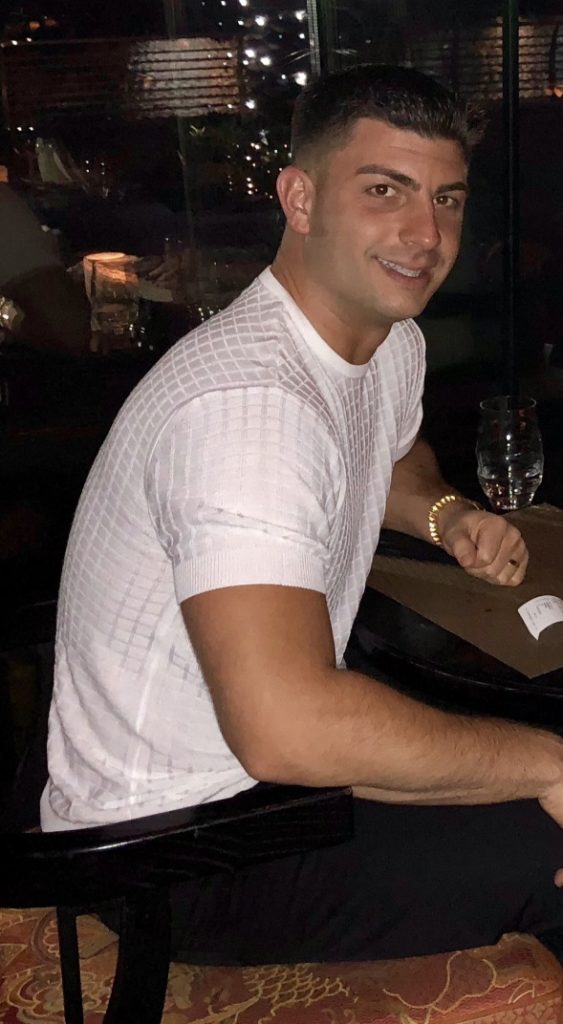 Phil Spallina
Phil Spallina
Studio: Jungle City Studios
Clientele: Alicia Keys, Kanye West, Beyoncé
Web: junglecitystudios.com
Phil Spallina started at Jungle City in late 2012, 18 months after the studio’s launch. Like many in the business, he started as a runner: cleaning, making coffee and so forth. His entrée to the studio came through his aunt, Grammy-winner Ann Mincieli, who happened to engineer for Alicia Keys and is the studio owner and operator. He soon found that he loved the environment. His passion fueled his performance and it wasn’t long until he became the manager. Interestingly, Jungle City was designed by noted studio architect John Storyk, whose first commission was Jimi Hendrix’s Electric Lady Studios.
What sets Jungle City apart from other studios?
Since 1995, Ann’s [Mincieli] vision for Jungle was to make it the best studio possible, sonically. So she brought in John Storyk, who’s one of the strongest studio designers. She worked alongside him to build this, along with a five-star hotel vibe. She wanted to make the room sound as good as possible, but also to make the artists and clients as comfortable as possible. She wanted anyone who came in here to make Jungle City their base.
What are some of the biggest challenges that face studios today?
COVID-19 threw a curveball into everyone’s plan, especially in New York where we were doing great in the years leading up to 2020. The challenge now is to pick up where we left off. We want everybody to know that they can come here, it’s safe and we’re putting health first.
What’s an ideal client for you?
I like having a diverse clientele. I don’t believe that you can survive off of one genre. Studio etiquette is something that’s important to us. Fortunately, we haven’t had clients who have come through and destroyed the place. Everybody treats Jungle with a lot of respect and I’m grateful for that.
What’s one of your favorite studio anecdotes?
I love the diversity that we have going on. We can have Madonna in one room, Depeche Mode in another and Rihanna in a third, all at the same time and they may never cross paths. I come into work and know that I’ll be a part of a creative experience and that’s more than rewarding. I’ve also seen paparazzi accidentally drive their scooters into the front door.
Do you enable remote work in any way?
Even before the pandemic we did remote work. Often, the artist would be in New York and the producer would be in L.A.. They’d either Skype in or use Source-Connect. Remote work for us didn’t increase during the pandemic.
Has the pandemic caused the industry to change permanently or do you foresee a full return to the studio, ultimately?
People will return to the studio because they’re eager to get back to a sense of normalcy. I believe they’ll always be conscious of what took place over the last year or so. Social distancing is huge, as is washing hands. I don’t think our generation will ever forget these guidelines; they’ll be more conscious moving forward and hopefully forever.
What are the best ways for artists to save money in the studio?
Get to work. No playing around. Come in and get your work done.
What’s the biggest challenge you’ve ever faced as a studio manager?
The pandemic. When we were forced to close, that was the toughest thing that I had to explain to our employees and clients. Some don’t take no for an answer: they wanted to get in and create stuff. We’re coming out of it, though, and we have a solid schedule. We’d be nothing without our dedicated employees.
What does the future hold for studios?
The studios that are reliable and consistent will always have a niche. There will always be a place for artists to get work done. Many of them have home studios, but they still value working in a professional one. You’re not going to fly in three producers from California to work in a home studio.
Jungle also has a lot to offer in terms of gear, whether it’s vintage or the newest synthesizers. Rarely do I have to rent anything. It’s a nice workflow when you can go into the storage [room] and grab a U47 [microphone], a Prophet-6 [synthesizer] or one of our more than 30 vintage guitars. We’re most proud of the EMI TG12345 Mark IV console that used to be in Abbey Road Studios. Before we even had a studio, Ann wanted that piece of gear. It’s her prized piece. •
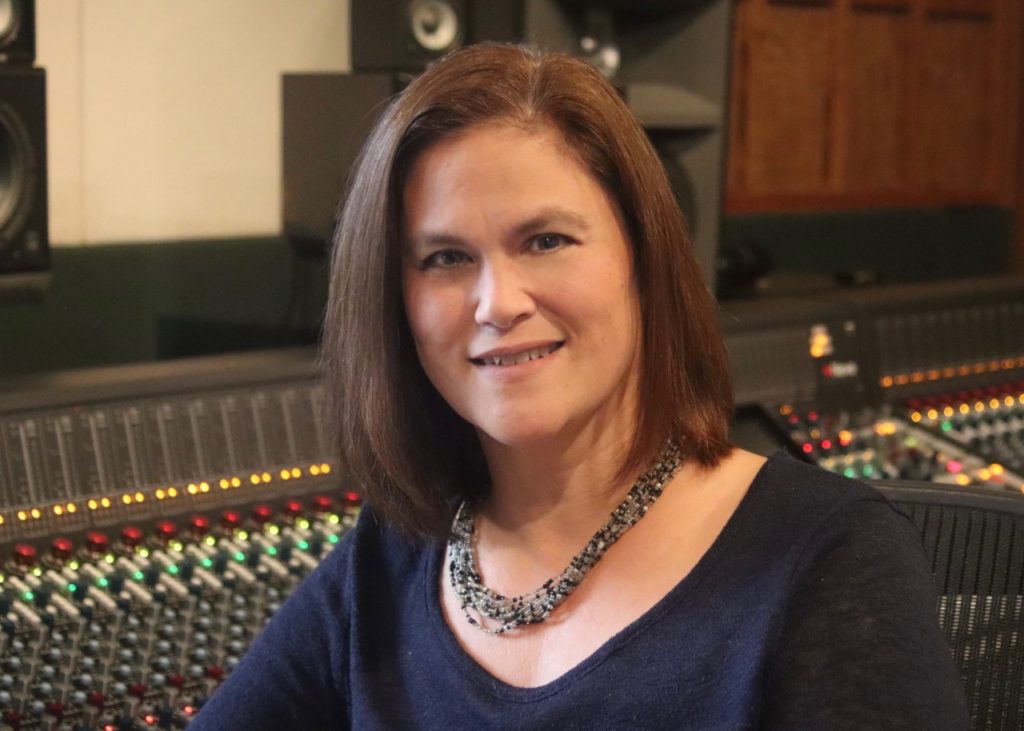 Tina Morris
Tina Morris
Studio: The Village
Clientele: Madonna, The Rolling Stones, Nelly
Web: villagestudios.com
Upon graduation from Berklee College of Music with a degree in music production and engineering, Tina Morris worked at various Boston studios. Shortly after getting married, she and her husband moved to Los Angeles, partly because of the enviable number of studios in operation. She started as a runner at The Village in 2006, moved into tech and later into engineering. When the previous studio manager left, owner Jeff Greenberg offered her the job, which she’s held since 2008. Some of Morris’ favorite artists she’s worked with are Elton John and Coldplay. She also loves when film scores are booked.
What sets The Village apart from other studios?
The hospitality. Everybody has Pro Tools and an 88R [Neve]. It’s also the sound of the rooms. T Bone Burnett called Studio D an instrument that he likes to play. We have a lot of variety; different flavors for different artists. Jeff [Greenberg] comes from a live-sound concert background. He worked with Nederlander [Concerts] and ran The Greek Theater for years. We have a concert mindset. “Showtime is now; fix it now.” We don’t want clients to have to wait. We like to treat this like the Four Seasons: everyone is welcome and treated the same. Studio D was built for Fleetwood Mac and they recorded Tusk in it, although the days of full-on lockouts have gone by the wayside, mostly.
What are some of the biggest challenges that face studios today?
The use of technology brings a wave of people thinking they can do it themselves. They go back to a home studio or rehearsal space and realize that it’s cooler and more productive to work in a room with professionals. I’ve seen that wave a couple of times. To keep up and adjust to it is a challenge. It’s costly sometimes, but to be able to do that allows us to switch from a film score in the Moroccan Room to a hip-hop session in Studio D.
What’s an ideal client for you?
Somebody who communicates what their needs are, even if it’s challenging. An awareness of what we go through is also helpful. There are different levels of professionalism that we experience. Someone like Elton John or Dave Matthews is here to work and not to prove themselves; there aren’t a lot of egos going on. Someone who just got a record deal and feels that he or she needs to throw their weight around makes it challenging for us.
What’s one of your favorite studio anecdotes?
I’m thankful for how comfortable people are here. About six years ago we’d done Sara Bareilles’ record and she’d invited Jeff to her Grammy after-party. A few days later, he came in and talked about how great she was. At that exact moment, Sara walked in to say hello. You couldn’t have written that better.
What kinds of things did you do to survive the pandemic?
We were closed for two months––March through May 15. About a week into the shutdown, all of the studio managers got together and came up with a united front; we worked together. Even though we’re competitors, it made me realize what a cool community we have.
Do you enable remote work in any way?
When we shut down, my biggest stress was how to take care of our guys and to keep them working. I’ve been through a studio shutdown before and I knew that there would be a life after it. I had a shower-thought to do a “virtual village.” So I worked with my staff and considered all of the scenarios we might face. We figured out how to run sessions remotely, did a lot of major-label releases and even vocal sessions for TV shows. A portion of our proceeds went to MusiCares to show our appreciation that we were able to keep running.
Has the pandemic caused the industry to change permanently or do you foresee a full return to the studio, ultimately?
Right now we’re fully booked. We just opened Studio Z and I still need another room. I think what will permanently change is the remote access to monitoring sessions, because we’ve come up with such a great way with Zoom and different plug-ins to have high-quality audio streams. There’s a market for having a reason not to fly from New York to L.A. to be here for one session. Fifty percent of our sessions daily are remotely monitored. Prior to the pandemic, it would happen maybe twice a year.
What are the best ways for artists to save money in the studio?
Being prepared. If you’re rehearsed, it’s not going to take you 20 takes to get the right one. It’ll take five or six. Do a lot of pre-production so you’re not experimenting so much and know what your needs are.
What’s the biggest challenge you’ve ever faced as a studio manager?
Scheduling and working with people’s needs. I call it “scheduling Tetris.” I can move people around when I have to. I hate bumping clients and sometimes people get mad. It’s not a money thing. I like to err on the side of creativity. Yes, business has to be a consideration, but it’s people’s hearts and souls that they want to get recorded.
What does the future hold for studios?
There will always be a place for them. We have to be wise about what technologies are out there and how to still be versatile. If The Village stayed just a rock studio, we wouldn’t still be here. What I love now is that we’ve got a lot of young talent and labels are starting to open the purse strings, because they’ve finally discovered how to make money off of streaming and the internet. Vinyl’s also making a comeback and that makes me happy. •
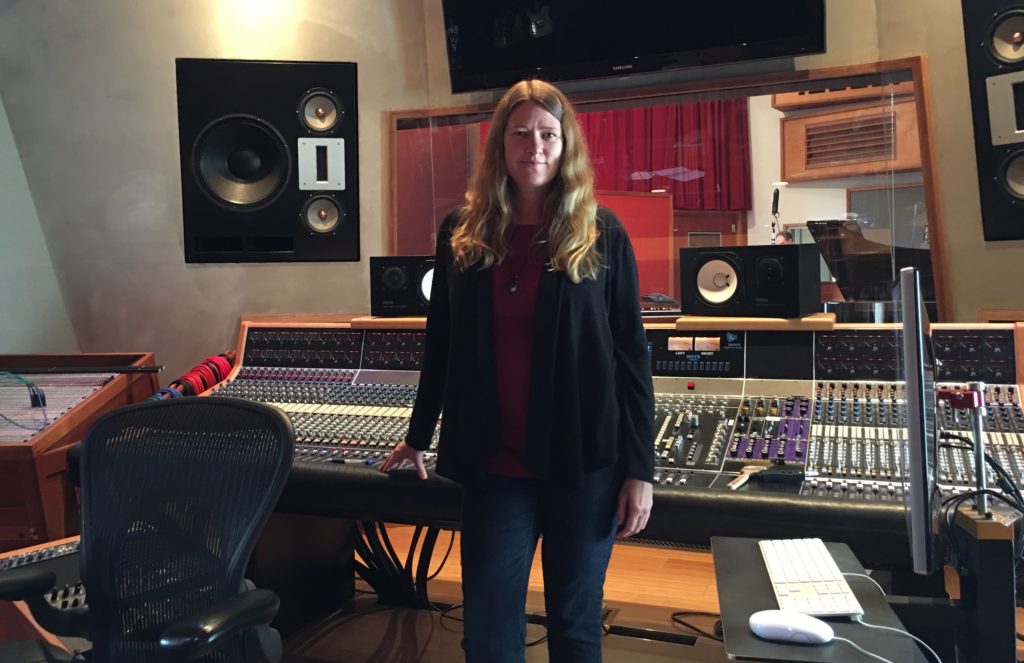 Cindy Larsen
Cindy Larsen
Studio: Guilford Sound
Clientele: Ryan Montbleau, Valerie June, Ruth Garbus
Web: guilfordsound.com
Guilford Sound was established in rural Vermont in 2011. Cindy Larsen has been its manager since day one. But she used to make her home in San Diego where she managed and booked tours for bands and also scheduled for two night clubs. Larsen moved to Vermont where her husband did stonework for Guilford as it was being built. She connected with the owner Dave Snyder, still loved music and was invited to manage the freshly minted audio abode. As a residential studio, Guilford offers overnight accommodation to artists, endless hiking trails and boundless privacy.
What sets Guilford Sound apart from other studios?
We’re a green studio. We have full solar panels, a whole HVAC system with ground pumps and a wood-fired boiler. We try to minimize our carbon footprint, have Passive House certification and are working toward net zero. The sound part of our studio was designed by Francis Manzella and we’ve got a great gear selection that rivals any studio. And where we are is so private. We’re on 600 acres and the scenery is stunning. We’re surrounded by hiking trails.
What are some of the biggest challenges that face studios today?
COVID was a huge one, obviously. But we were lucky enough to have a reserve to see us through. The hardest part was trying to follow all of the guidelines. We had a lot of tentative sessions that we had to cancel because the artists couldn’t fit into the state [COVID] requirements. But people really figured out we were here, because of the pandemic, since we’re so isolated.
What’s an ideal client for you?
We’re pretty easy-going here and are about as quintessentially Vermont as you can get. We like anybody and are open to any type of music or clientele. The person who gets it here is someone who wants quiet. If they want to go out to a bar at two in the morning–– we’re in southern Vermont, things shut down [early]. People want to come here to record and experience nature. Those are our ideal clients––someone who comes up from the housing through the woods to the studio. Artists who are used to the city sometimes take a few days to adjust. Also, anyone who checks out our mic collection and is blown away.
What’s one of your favorite studio anecdotes?
We had artists in from New York and the U.K. a few weeks ago and they saw a bear with its cubs cross right in front of their car and stand up on its hind legs. It was even funnier because one of them had asked if she was likely to see bears here. That was about a quarter of a mile from the studio. It’ll probably end up in a song.
What kinds of things did you do to survive the pandemic?
We shut down completely for about three months. After that, we opened slowly and were able to do a lot of local stuff. What was interesting about COVID was that people were looking for recording studios and Vermont was known nationally for having the lowest infection rate, in part because people are spread out and because our governor was so strict. People wanted to come here, but the restrictions prevented that. That was tough. But even if a client isn’t vaccinated, they can still come here and record as long as they wear a mask and maintain social distancing. Luckily, we have four iso booths. That’s how we’ve gotten around some of the restrictions.
Do you enable remote work in any way?
Not really. Our tracking room is really big and we have great sound. We have had producers work remotely, but we haven’t done remote engineering.
Has the pandemic caused the industry to change permanently or do you foresee a full return to the studio, ultimately?
I see a full return for us, unless there’s another COVID variant. We’re residential and weren’t allowed to house anyone for a while, so we filled in with a lot of local musicians such as Roger Clark Miller. We’re busier than we’ve ever been and are booked-up almost though Thanksgiving.
What are the best ways for artists to save money in the studio?
We’ve had some come here for two weeks and be fully rehearsed; they were ready to go. That’s the biggest thing: be ready to record when you come in. But some people have the budget to be open-ended and that’s always fun.
What’s the biggest challenge you’ve ever faced as a studio manager?
Getting the word out that we’re here. In 2017 we were ranked in the BBC’s 10 most stunning places to make music. You can advertise, but it’s more word-of-mouth. That took a while for us to build. We’d hired a publicist and that helped a little. The pandemic also spurred people to find us, because nationwide Vermont was known as a safe place to be. Our story is probably a little different from other studios. It can be tricky for people to understand what we have here. They kind of think that Vermont is a hobbit world and in some ways it feels that way. But we rival any other studio and people are beginning to discover that.
What does the future hold for studios?
I hear all the time of studios going under. It is really tricky for bands without a big budget to record in a high-end facility. We’re also really careful not to undercut the smaller studios who can’t offer what we do. The smaller ones probably have a hard time making ends meet because people can do things on their own. •
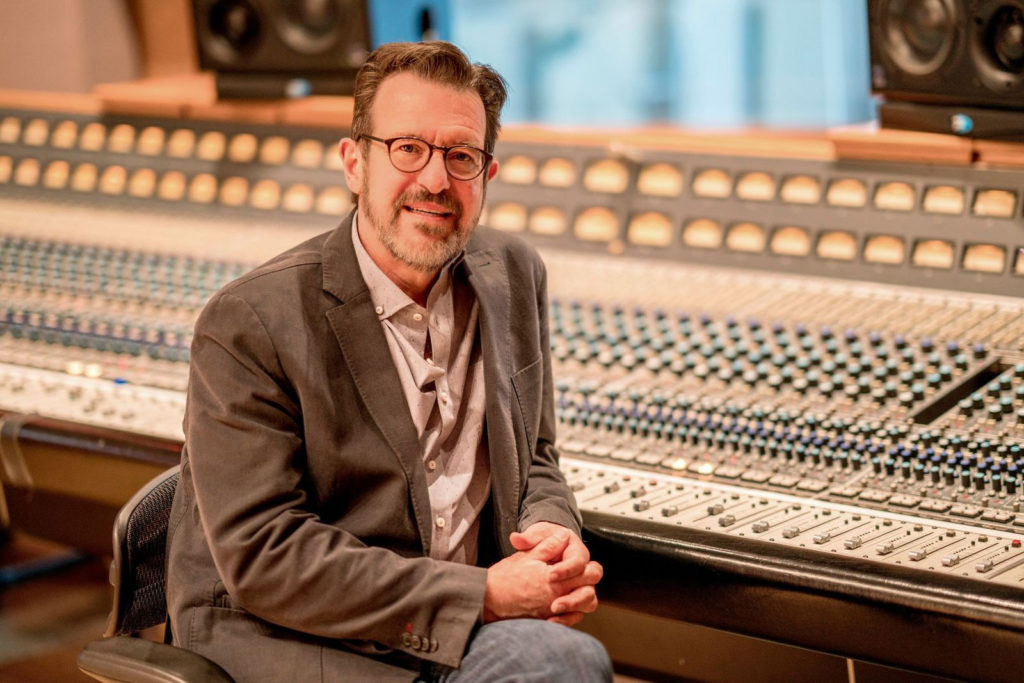 Pat McMakin
Pat McMakin
Studio: Ocean Way Nashville
Clientele: 3 Doors Down, Beck, Dolly Parton
Nashville native Pat McMakin got his start in studio management as an undergraduate at Belmont University in the late ‘70s. While there, he oversaw the student studio and in 1982 moved on to Tree Publishing. Ocean Way Nashville––now owned by Belmont University––was opened by Allen Sides and Gary Belz in 1996 as something of an extension of Los Angeles’ storied Ocean Way. As an engineer, McMakin worked on Vern Gosdin’s Chiseled in Stone as well as with Ray Charles, Tammy Wynette, and Steve Martin on his 2009 bluegrass record The Crow: New Songs for the 5-String Banjo.
What sets Ocean Way Nashville apart from other studios?
Our amazing staff and our service-oriented attitude. We make it familiar and friendly. I give as much care and attention to a newbie who’s never recorded as I do to Bob Seger. The biggest differentiation for us is the room. Our A room is in a beautiful, 120-year-old church sanctuary with 30-foot ceilings. We do orchestras there and can seat 80 people. We also do a lot of scoring for film and video games there including Call of Duty and Fortnite. The video game industry is so rich right now and they can easily add $200,000 [for music] to a project.
What are some of the biggest challenges that face studios today?
Home studios. The technology has gotten so good that you can record pretty credibly anywhere now. That’s been tough to compete with. There was a time when the cost of entry was quite high. Now it’s not. A lot of people mix in private studios. That’s why about 10 years ago I started to look at orchestras––something we could do better than everybody else.
Incidentally, Waves Audio contacted us recently about doing a plug-in. So now there’s an Nx Ocean Way Nashville plugin that’s a model of our control room. When you mix at home, it gives you all the spatial information that you’d have if you were sitting in our room. It even has a head-tracker. As you turn your heard, the perspective of the speaker changes, just as if you were sitting in front of a pair of speakers. People who mix on headphones love it. There’s an Abbey Road equivalent and I believe we’re outselling it.
What’s an ideal client for you?
Our A room books farther out. Studio B is a little easier to get into. But if you can give a two-month advance notice, the odds of you finding a band and a studio that you like that all line up are much greater. As you start carving down from two months, people and studios start to get booked.
What’s one of your favorite studio anecdotes?
One day we had Joe Bonamassa in one studio, Keb’ Mo’ in another and a third client in B who was using Pino Palladino on bass. I made a point of getting them all in the same room and just sat back and watched as these guys hugged and laughed and generally had fun.
What kinds of things did you do to survive the pandemic?
The first thing that happened was that Belmont [University] called on March 15th and told me to shut down the studio. We had sessions booked for that night. They allowed those, but then we had to cancel a lot of stuff, which annoyed several people. They kept us closed for three months. But we used that time; our tech crew never took a day off. They worked straight through and did repairs.
We reopened in June. Violin players wore masks until last week but with brass, that was an issue. But I did some research and learned that brass instruments don’t spew any aerosol. We bought a UVC light so that we could disinfect the studios each night. A month later, we learned that surface-born [infection] wasn’t a huge issue. We’ll still use the UVCs during cold and flu season just because it’s good health. Companies like Netflix and Apple with all those shows ready to go needed scores. We could have picked up a ton of clients during that period. But we had to be closed for the time that we had to be closed. Once we reopened, we picked up some clients.
Do you enable remote work in any way?
Yes. Chris Lennertz, a composer who does the music for Lost in Space, can’t fly out to us, so he connects with Audiomovers. Sometime in the two years prior to the pandemic we’d invested in a pretty extensive video installation for this purpose. We have a four-camera feed with the conductor, two shots of the orchestra and a timecode bar. That’s transformational for a business like ours, because it takes a scoring facility that’s in the flyover part of the country and makes it a global business. I’ve done remote sessions for producers in London, L.A. and Tokyo.
Has the pandemic caused the industry to change permanently or do you foresee a full return to the studio, ultimately?
If anything, the pandemic has solidified what recording is: something that’s done as much in a private facility as in a commercial one. An area I like to talk about is to know when you need which. I love the idea that I can sit in a studio and not worry about a clock and it’s comfortable. I get those advantages. But there’s a moment when it’s easier to rehearse your band, rent a studio and a good engineer and knock out five songs. Then if you want to take a month and finish those songs at your producer’s studio, that’s great. You’ll get a better result if you do and will thank yourself for it. Track in a commercial studio. If you don’t, the social and human aspect is stripped away a bit.
What are the best ways for artists to save money in the studio?
Pre-production. When I produce, that’s a place where I really spend the time. Make sure you’ve got the material, that you’ve got it charted and you know all of your transitions from verse to chorus. That makes it go fast, because the band isn’t working on the arrangement as much.
What’s the biggest challenge you’ve ever faced as a studio manager?
It’s always financial. Since streaming is what it is, a lot of the money goes to the label and not the artist, so the money they’d allocate to a recording budget will be tight. Budgets are lower, costs of doing business have increased, but the effective studio rates haven’t changed in about four years. Keeping a balance to what you can charge versus your cost structure is an age-old business equation.
What does the future hold for studios?
I fear that it will continue to be whittled down to a few in the city. But there will always be a class of people who will want pro studios. It’s a proven model that has value. If I were in the equipment business, I’d be looking forward to the time coming up [because] recording is becoming more ubiquitous. There’s a rapper who records everything on his iPhone.
The bottom line is that breaking even is about all you’re going to do. You might have years that are profitable, but you’ll end up reinvesting that money. We need to have people who are willing to invest the money and the studio will have value to them beyond the rental income. We see a lot of studios that are sitting on real estate plays. There’s a little one in town and where it sits is zoned for 24 stories. It’ll sell when the right developer comes along.

